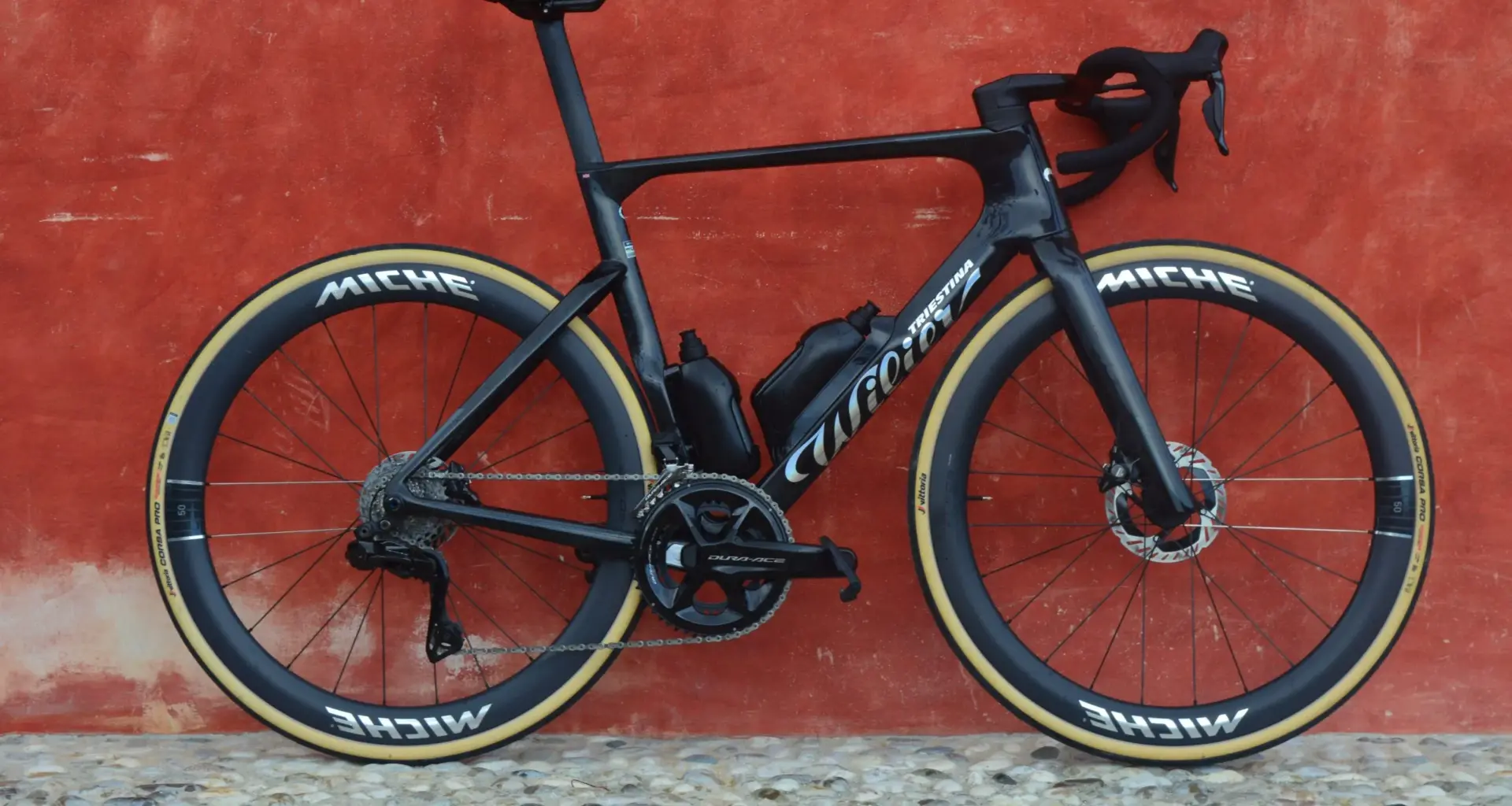Wilier has launched the Filante SLR ID2, the long-awaited update to the brand’s Filante SLR aero bike. By refining the frame and on-board components using computer analysis, Wilier says the Filante is the brand’s most aerodynamic road bike to date, with reported savings of up to 28.8 watts at 50kmh.
The brand attributes these gains to a proprietary aero bottle system, a flared handlebar, narrowed seatpost and refined tube profiles. These additions haven’t altered the frame weight, however, which remains at a claimed 860g, while the stiffness sees a slight increase of 7.5%.
The bike has already been spotted in action at the Italian Classics, with Romain Grégoire sneakily debuting the fresh Filante at Il Lombardia a fortnight ago. Going forward, the Filante SLR ID2 will be adopted by Grégoire’s Wilier-sponsored Groupama-FDJ team, who Wilier says played an integral role in the development of the new bike.
Prices for a complete Filante SLR ID2 build range from £8,750 to £11,650.
Related questions you can explore with Ask Cyclist, our AI search engine. If you would like to ask your own question you just need to , or subscribe.
If you would like to ask your own question you just need to , or subscribe.
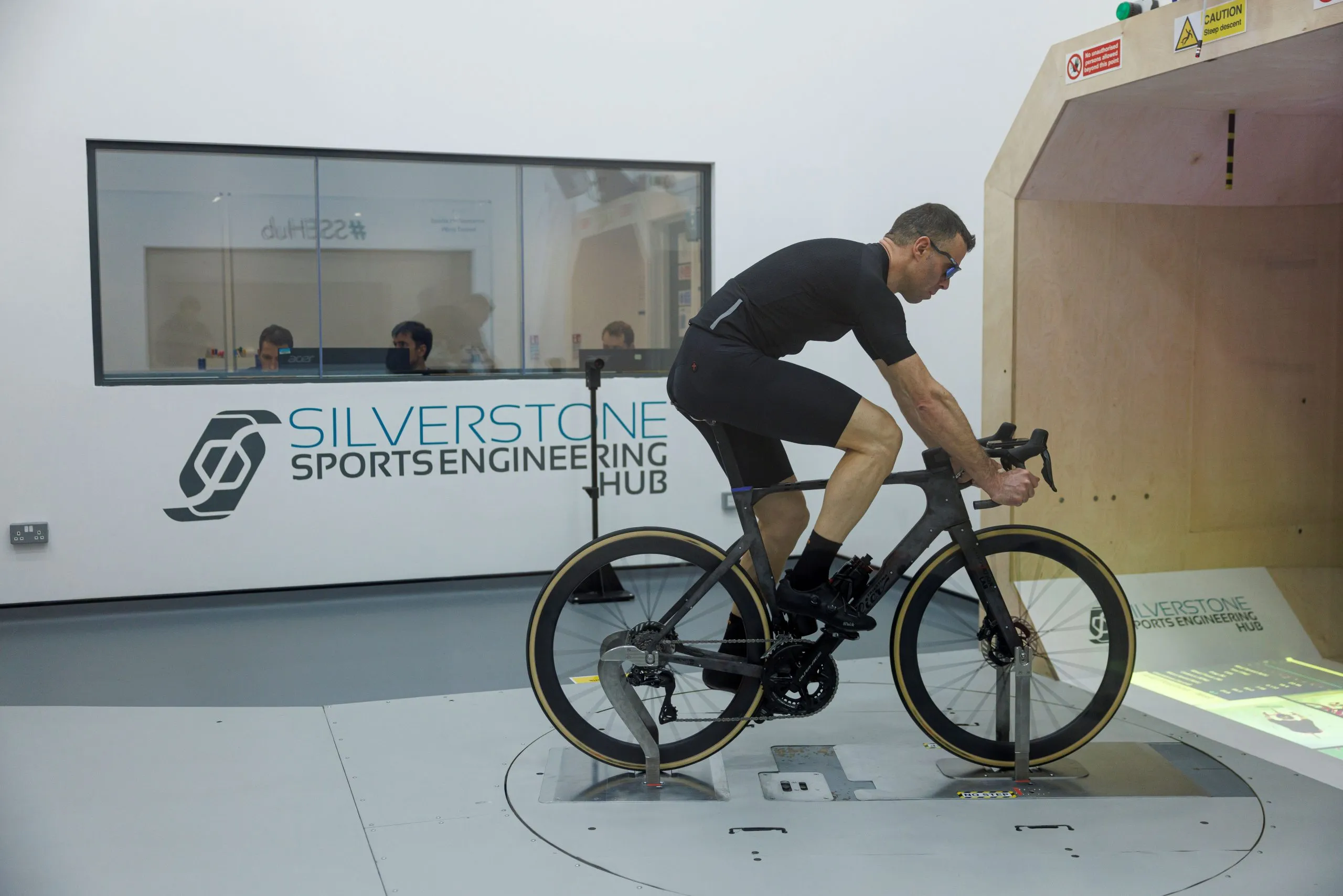 Wilier
Wilier
The Wilier Filante SLR ID2 replaces the previous generation, which was released in the autumn of 2020. In those five years, the bike was piloted by Mark Cavendish to a record-breaking 35th victory at the Tour de France, but a revision was needed to keep up with the fast-paced fleet of aero bikes on the WorldTour.
‘We already had a bike that was ridden and trusted by riders and pros. Lightness and stiffness are where we started as a benchmark for the new Filante,’ says Wilier product manager Claudio Salomoni. ‘Mark Cavendish asked for a stiffer frame a couple of years ago, but he soon realised that wasn’t the missing piece. For the new model then, we studied the bike as well as the rider and the on-board accessories. To develop the new Filante, we didn’t rely only on race experience, we used advanced computer simulations.’
As such, the bike was developed in several stages, starting with CFD (computational fluid dynamics), which acts as a virtual wind-tunnel. During this phase, Wilier split the rider, bike and accessories into 93 subdivisions in order to identify key areas of improvement. From the computer simulations, the brand ran in-person tests at the Silverstone Wind Tunnel to adapt their virtual findings to respond to real-world conditions and a peloton scenario, where airflow can be disrupted by an unpredictable pack of riders.
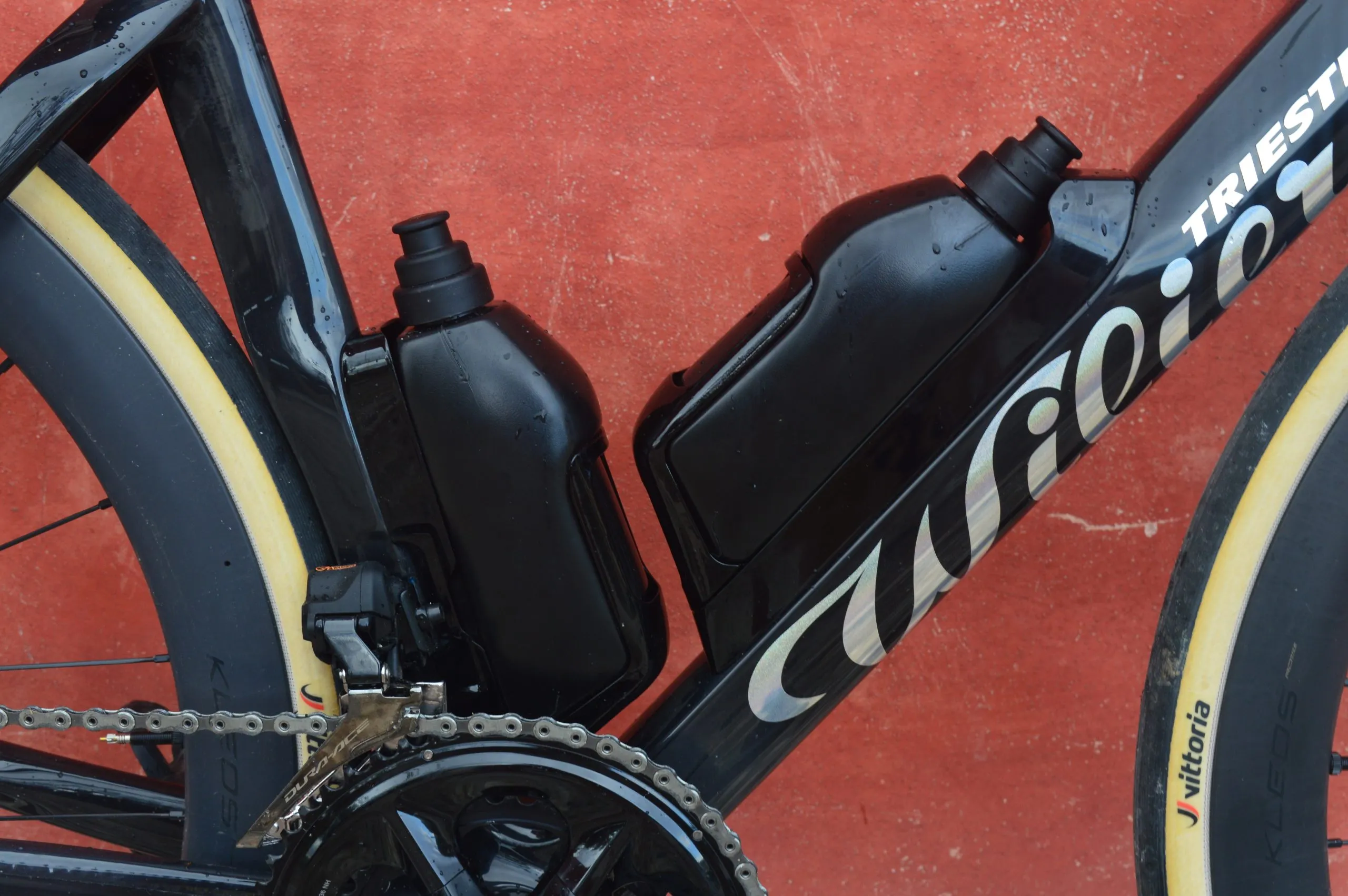 Cyclist/Ewan Wilson
Cyclist/Ewan Wilson
Visually, the most apparent development from this research is the addition of what Wilier calls ‘the aerokit’, which will come specced on all Filante builds. The kit includes a pair of aero-optimised bottles and cages developed alongside Elite, who worked on a similar system for BMC’s Timemachine Road.
‘We noticed that previously we were testing the bikes in the wind-tunnel without bottles or a computer mount on board. This isn’t realistic,’ says Salomoni. ‘We knew from the Supersonica [Wilier’s time-trial bike] that it would be difficult to create significant changes to the down tube to improve performance. Instead, it was a matter of fine-tuning small things around that main triangle. Knowing that, an important place to start for us was the bottles. We ran computer analyses to refine the shape of the bottles.’
Though the Filante’s cages can also house round bottles, the final product is a pair of rhombus-shaped bottles with custom cages that match the shape of the down tube to minimise wind turbulence. The result is a 3.5% drag reduction. In other words, Wilier says the bottle kit alone saves a rider about 3W when riding at 40kmh, or 4W at 50kmh.
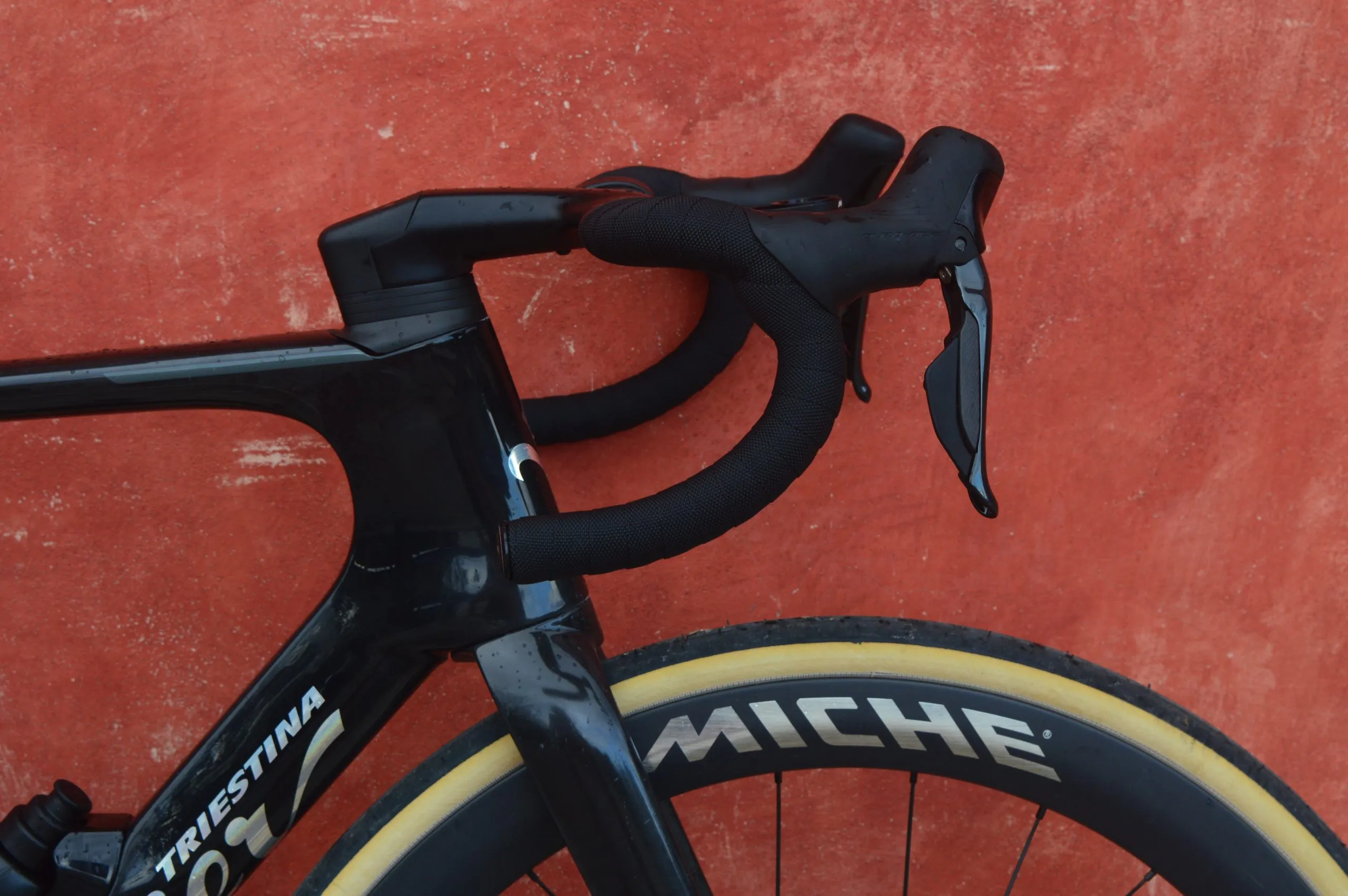 Cyclist/Ewan Wilson
Cyclist/Ewan Wilson
In the pursuit of reducing drag, the Filante SLR ID2’s head tube has been deepened in comparison to the previous generation, but not to the same extent as its aero counterparts, such as the Ridley Noah Fast, Cervélo S5 or the new Argon 18 Nitrogen Pro.
Looking down, the forks follow a wide NACA airfoil profile [a series of standardised aerodynamic shapes] and a flat inner side said to minimise interactions between the airflow and wheels.
The shapes are slightly different on both forks. The left leg uses a fin shape to allow air to skim the disc and minimise interruption around the brake calliper, while the right fork leg now covers the thru axle clamp to minimise unwanted drag there.
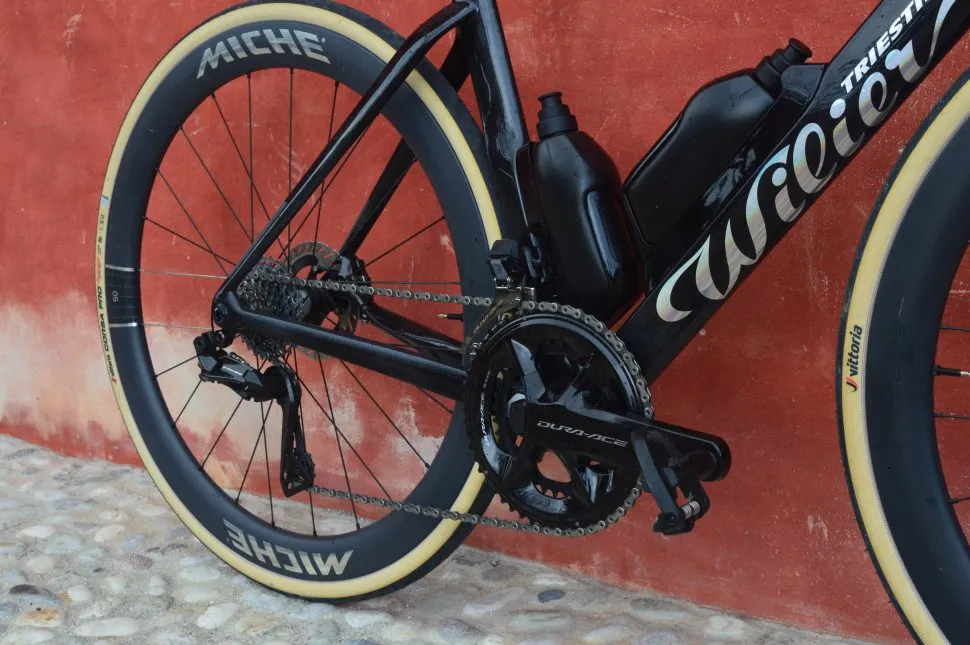 Cyclist/Ewan Wilson
Cyclist/Ewan Wilson
Towards the rear end of the bike, the seat stays have also been inclined by 2.5°, somewhat as a response to the revised aerodynamics in the bike’s front half. This also brings the tubes closer to the wheels.
‘Sometimes you think something is more aero,’ says Salomoni. ‘That’s not always the case. We understood that if we bend the stays slightly inside, we are able to reduce the turbulence with the added movement of the rider on board. It’s not conventional to make it wider, but our testing concluded that this change in angle performs better.
‘At university, engineers will tell you that for top aerodynamic performance, you have to follow the NACA profiles. In reality, the seatstays receive a lot of turbulence from the rider’s legs, the chain turning, all of that. We found through our testing, we had a better result with our shapes than what a typical NACA profile would deliver. That shows that we didn’t just follow the rules, we tried to adapt the Filante to make it better for the cyclist.’
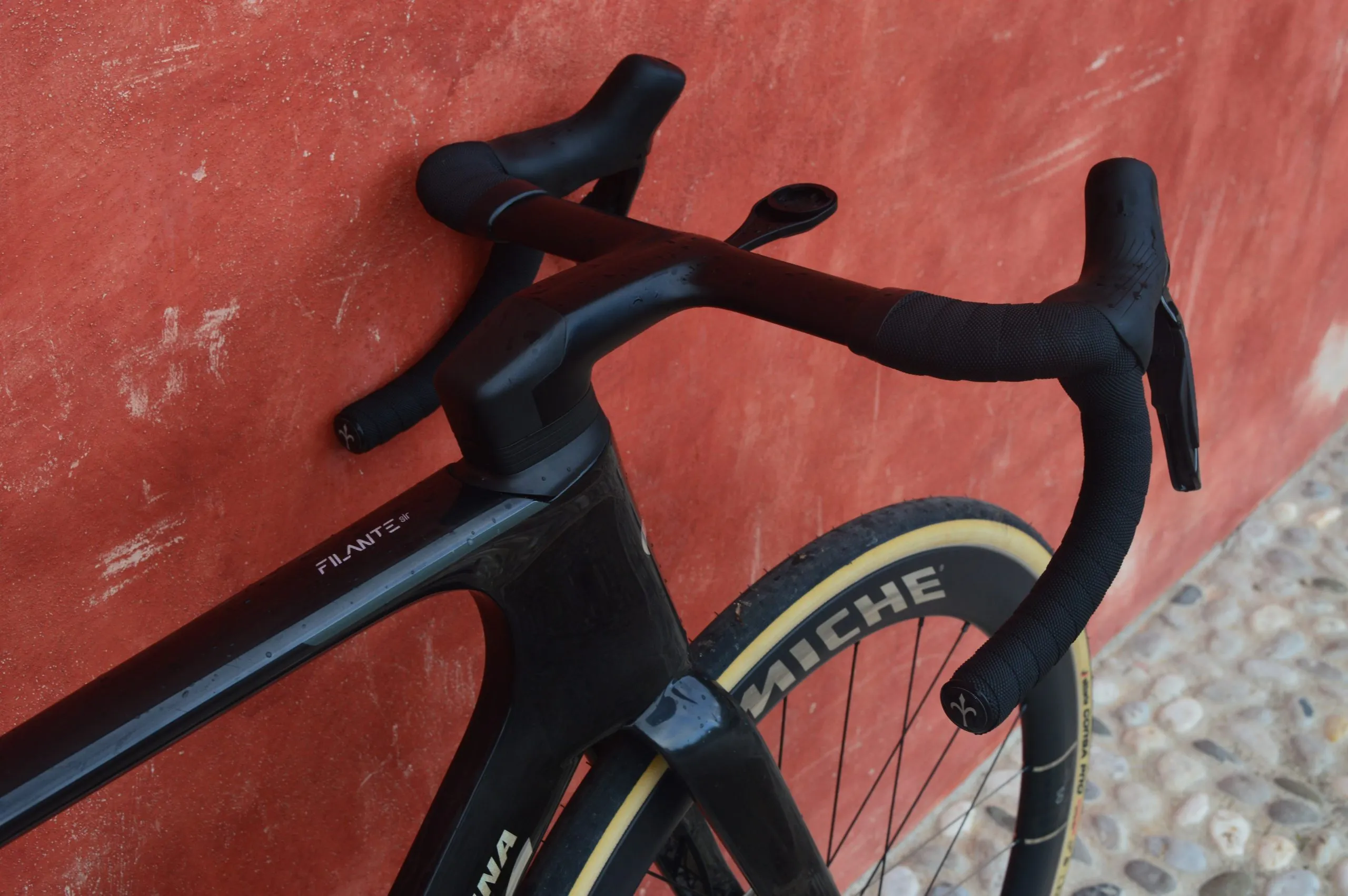 Cyclist/Ewan Wilson
Cyclist/Ewan Wilson
All specs of the Wilier Filante SLR ID2 are finished with the brand’s F-Bar ID2 handlebar. With the help of technical experts and pros at Groupama-FDJ, the integrated cockpit has been adapted to create a more adjustable and ergonomic fit than its previous version.
There are five stem sizes to choose from, plus seven spacer combinations. Like most recent aero-inspired releases, the bars have a slight 3cm flare in the three widths available: 35cm/38cm, 37cm/40cm and 39cm/42cm. This flare consistency is said to respect the ergonomic benefits from a flared bar, preserving comfort and control when riding in an aero-friendly tuck position.
The new Filante is still compatible with Wilier’s other road cockpits, including the former F-Bar ID1.
 Wilier
Wilier
Wilier says the Filante SLR ID2 has adapted the aerodynamic know-how from the development of the brand’s Supersonica time-trial bike and applied this to improve the aerodynamics of the seatpost.
‘We understand that riders are riding forward more on the bike,’ says Salomoni. ‘This means we had to integrate the seating option to accommodate an optional 15° angle. We also had to confront the open channel of air between the rider’s hands and the seatpost. The shape we chose, which is a slightly refined version of a NACA profile, results in the most optimal solution for smoother airflow as the tube has been made narrower.’
Given that the seatpost has been thinned out, the location of the Shimano Di2 battery has been relocated to the bottom bracket junction (describe whereabouts). This placement, along with the heavier aerokit, has helped to drop the centre of gravity, which, in principle, helps to improve stability and ride precision.
The Filante’s rear triangle has been slightly lengthened, accounting for increased tyre clearance (up to 34mm), better groupset integration and stability for the rider. As for drivetrain, the new Filante’s can also be set up to run a 1x chainring (up to 56 teeth), something the brand views as ‘future proofing’ along with the inclusion of the UDH standard for the rear derailleur.
Under the chainring, the power meter magnet is now integrated into the left chainstay to improve airflow. If a power meter isn’t fitted, ‘a surface-flush sticker’ can be used to cover the groove to ensure the same aero benefits.

The frame weight is the same as the previous generation, coming in at 860g. Otherwise, the bottom bracket stiffness has been increased by 7.5%.
There are some small alterations in the fit geometry, finalised with the insight of Groupama-FDJ’s technical crew. The reach and stack are said to be ‘less steep and more stretched’, with a particular focus on enhancing these in smaller and larger sizes. That said, a large size (roughly 56cm frame) offers a 393mm reach and a 559mm stack.
When compared to the 2020 Filante, the brand’s testing reveals a 13.6% drag reduction for the new frame alone, and a 4.5% drag reduction when paired with a moving rider. This translates to a 1:45 time reduction on a 70km ride at a 290W effort. At WorldTour speeds, this saving is expected to increase.
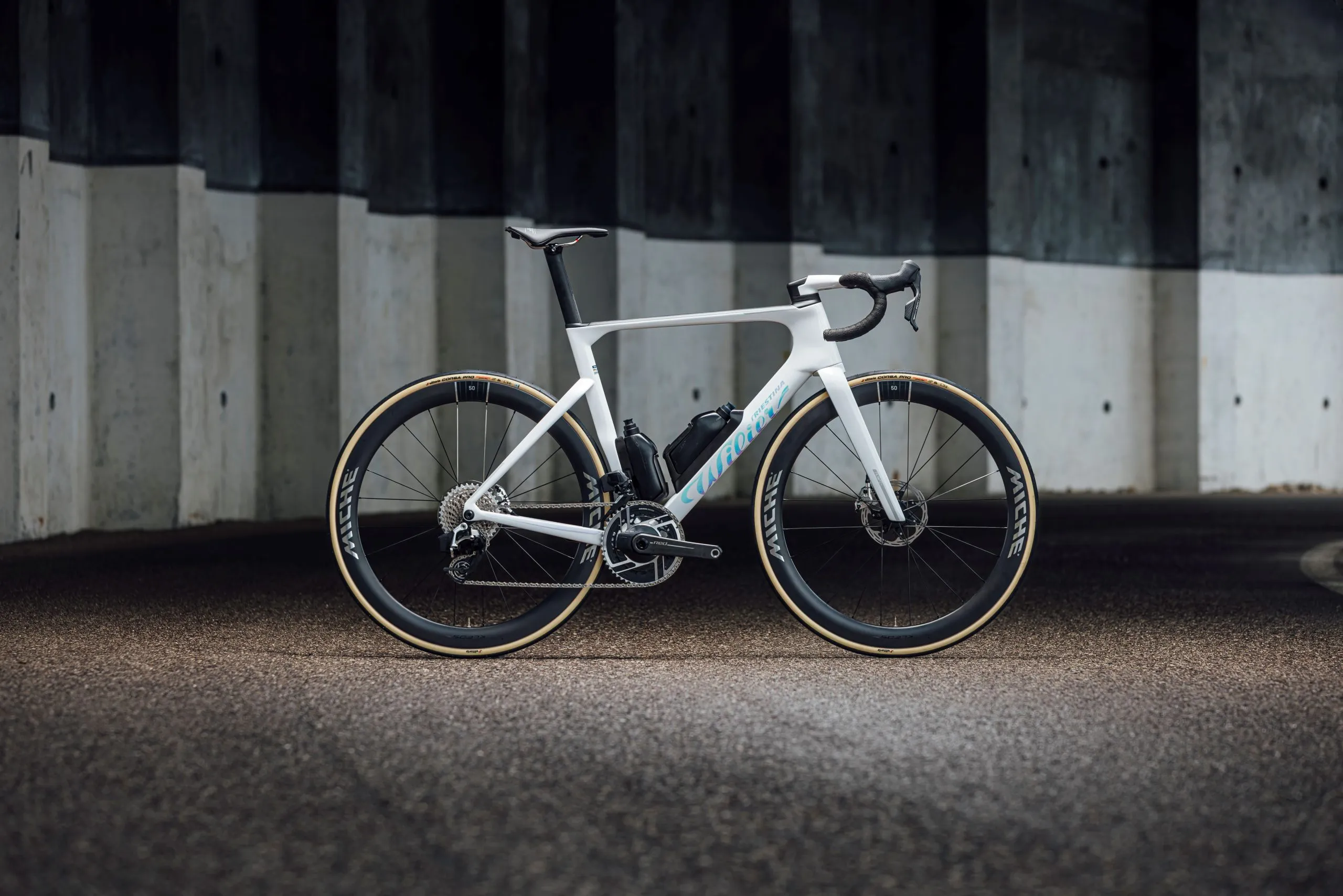 Wilier
Wilier
Eight specs will be available for the Wilier Filante SLR ID2. The top builds will be furnished with the Miche Kleos RD 50 wheelset and a choice of either the new Campagnolo Super Record (Europe only), SRAM Red AXS or Shimano Dura-Ace Di2. At a lower price, the bike can come with the Miche Kleos 50 wheelset and the choice of Shimano Dura-Ace (Europe only), Ultegra Di2 and SRAM Force AXS.
Alternatively, the full frameset with the handlebar, aero bottles and integrated mount bundled in comes to £5,500/€5,800.
Filante SLR ID2 Campagnolo Super Record WRL: €13,100
Filante SLR ID2 Sram (with powermeter): £11,650/€12,900
Filante SLR ID2 Shimano DuraAce Di2 (with power meter): £11,450/€12,700
Filante SLR ID2 Shimano DuraAce Di2: £10,750/€11,900
Filante SLR ID2 Shimano DuraAce Di2*: €10,900
Filante SLR ID2 Shimano Ultegra Di2*: £8,750/€9,700
Filante SLR ID2 Sram Force AXS (with powermeter)*: £9,300/€10,300
Filante SLR ID2 Sram Force AXS*: £8,950/€9,900
*With the lower-grade Miche Kleos 50 wheel

